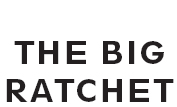The Big Ratchet: How Humanity Thrives in the Face of Natural Crisis
Read The Big Ratchet: How Humanity Thrives in the Face of Natural Crisis Online
Authors: Ruth DeFries





Copyright © 2014 by Ruth DeFries
Published by Basic Books,
A Member of the Perseus Books Group
All rights reserved. No part of this book may be reproduced in any manner whatsoever without written permission except in the case of brief quotations embodied in critical articles and reviews. For information, address Basic Books, 250 West 57th Street, 15th Floor, New York, NY 10107-1307.
Books published by Basic Books are available at special discounts for bulk purchases in the United States by corporations, institutions, and other organizations. For more information, please contact the Special Markets Department at the Perseus Books Group, 2300 Chestnut Street, Suite 200, Philadelphia, PA 19103, or call (800) 810-4145, ext. 5000, or e-mail
[email protected]
.
Designed by Pauline Brown
Typeset in 10.5 point Times New Roman MT Std by the Perseus Books Group
A CIP record for this book is available from the Library of Congress.
ISBN: 978-0-465-08093-9 (e-book)
10 9 8 7 6 5 4 3 2 1
In memory of my father, Mike DeFries (1923–2013),
whose curiosity about the world was contagious
CONTENTS

Ancient China Sidesteps the Bottlenecks
Buffalo Bones and Buried Coral
7: Monocultures March Across the Midwest
The Dark Side of the Revolution
The Planetary Machinery Lashes Back


S
CIENTISTS AREN’T SUPPOSED TO CRY
. We couldn’t help it. Our motley crew of American and Brazilian scientists was only midway through our mission. We had traveled hundreds of miles of dusty dirt roads crisscrossing the southeastern part of Brazil’s mighty Amazon forest. We were there to see if our reading of satellite pictures taken hundreds of miles above the Earth was true on the ground. The pictures showed not just one or two, but hundreds of large tracts of burned patches and bare soil where majestic forest had stood just a year before.
Our interpretation of the pictures was indeed accurate. Each time our caravan of two muddy cars navigated across streams and through potholes to a place where the satellite suggested a cleared patch, sure enough, we found a huge swatch of bare ground and felled trees, burned to make way for more profitable ventures. Finally, after coming across a particularly huge parcel, scorched and covered with ash, we sat down on a burnt log and looked at each other in despair. Tears welled up in an unguarded moment. Could this really be happening? So much beautiful forest burned and destroyed to put meat on dinner plates halfway around the world.
This was the early 2000s, when Blairo Maggi, the governor of the Brazilian state of Mato Grosso, was also on a mission. The state’s name—which means “dense forest” in English—was quickly
becoming a misnomer. Maggi was known as the
rei da soja
, the Soybean King, for his family’s empire, the largest private soy producer in the world. He was paving roads and promoting clearing of the forest in pursuit of his goal to make the state a top producer of soybeans, a crop that was a newcomer to the Amazon. Trucks were carrying the harvested soy to the port for ships to carry across the oceans to Europe and Asia. European and Asian farmers were feeding the soymeal to cows, pigs, and chickens to be slaughtered for someone’s dinner.
